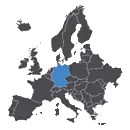Joomla!
Editors are used thoughout Joomla! where content is created. TinyMCE is the default choice in most locations although CodeMirror is used in the template manager. No Editor provides a text box for html content.
Default on:
- CodeMirror Help
- TinyMCE Help
- No Editor Help
Default off:
- None
These plugins are behind the buttons found beneath your editor. They only run when an editor plugin runs.
Default on:
- Editor Button: Image
- Editor Button: Readmore
- Editor Button: Page Break
- Editor Button: Article
Default off:
- None
The search component uses plugins to control which parts of your Joomla! site are searched. You may choose to turn off some areas to improve performance or for other reasons. Many third party Joomla! extensions have search plugins that extend where search takes place.
Default On:
- Content Help
- Contacts Help
- Weblinks Help
- News Feeds Help
- Categories Help
System plugins operate every time a page on your site loads. They control such things as your URLS, whether users can check a "remember me" box on the login module, and whether caching is enabled. Â New in 1.6 is the redirect plugin that with the redirect component assist you in managing changes in URLs.
Default on:
- Remember me Help
- SEFÂ Help
- Debug Help
Default off:
- Cache Help
- Log Help
- Redirect Help
Default on:
- Joomla Help
Default off:
Two new plugins are available in 1.6 but are disabled by default.
- Contact Creator Help
Creates a new linked contact record for each new user created. - Profile Help
This example profile plugin allows you to insert additional fields into user registration and profile display. This is intended as an example of the types of extensions to the profile you might want to create.
Content plugins run when specific kinds of pages are loaded. They do things ranging from protecting email addresses from harvesters to creating page breaks.
Default on:
- Email Cloaking Help
- Load Module Help
- Page Break Help
- Page Navigation Help
- Rating Help
Default off:
- Code Highlighting (Geshi) Help
Unterkategorien
Extensions
The Joomla! content management system lets you create webpages of various types using extensions. There are 5 basic types of extensions: components, modules, templates, languages, and plugins. Your website includes the extensions you need to create a basic website in English, but thousands of additional extensions of all types are available. The Joomla! Extensions Directory is the largest directory of Joomla! extensions.


